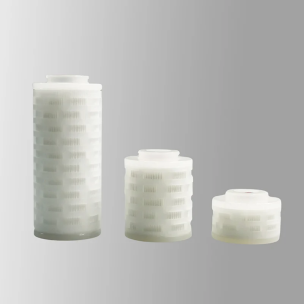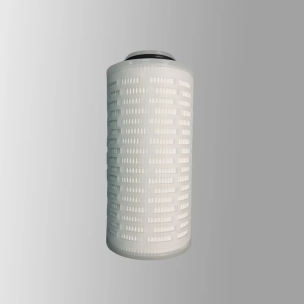How to Choose the Right PES Filter Cartridge?
2025-09-30
Selecting the right PES filter cartridge for your filtration system is no simple matter of "grabbing any PES filter cartridge." PES filter cartridges are widely used due to their outstanding performance. They directly impact the efficiency of the filtration process, cost control, the quality of the final product, and even the safe and stable operation of the entire system.
Clear Objectives
What do you need to filter with a PES filter cartridge? Are they invisible bacteria and microorganisms, tiny particles suspended in a product solution, or turbid liquids that need clarification? The answer directly determines the filter's filtration accuracy, often referred to as pore size, which is typically specified in microns or even smaller. For example, for terminal sterilization, you'll need an absolute sterilizing-grade filter cartridge rated at 0.1 or 0.2 microns, which effectively intercepts bacteria. However, if you're simply removing larger particles for pre-filtration or clarification, a 0.45 or 1 micron filter may be sufficient. The total volume of liquid you're filtering, the desired filtration rate, and the maximum operating pressure allowed for the entire filtration process—these parameters together form the core performance requirements for your filter element.
Understand the Liquid Characteristics
What liquid will the PES filter cartridge be used to filter? What is its composition? What is its acidity or alkalinity? What organic solvents may be soluble or corrosive? What is the approximate operating temperature range? This information is crucial. While PES material itself has very broad and excellent chemical compatibility, being resistant to strong acids, strong bases, and a variety of organic solvents, it is not universally compatible. Certain extreme chemical conditions or specific solvent combinations may still cause swelling, dissolution, or weakening of the PES material or its adhesives and sealants. Therefore, before selecting a filter element, carefully review the detailed chemical compatibility table provided by the filter element manufacturer to ensure that the liquid you are filtering is within the range that the PES filter element can safely contact and handle. Ignoring this step can lead to rapid filter element failure or even rupture, resulting in serious consequences.
Matching Sizes and Interfaces
It is important to understand the PES filter cartridges that the filtration equipment accepts. This includes: the overall length of the filter element, the diameter of the filter element, and the style of the connectors on both ends. When selecting, be sure to strictly follow the equipment manual or the equipment itself to ensure the correct match. Mismatched connectors can lead to installation problems or leaks due to poor sealing. Too long may prevent the filter housing from fitting, while too short may result in incorrect seal positioning or insufficient effective filtration area. This seemingly simple and basic step is a common area for practical errors.
Industry Requirements
The hygiene standards, safety performance, and traceability of PES filter cartridges vary significantly across different industries. For example, in the biopharmaceutical industry, filter cartridges used for sterile filtration or final product filtration must have a comprehensive validation package, including biosafety testing, rigorous bacterial retention validation, and compliance with relevant Good Manufacturing Practice (GMP) requirements. The food and beverage industry is more concerned with whether the filter material meets FDA or EU food contact material safety standards to ensure that no harmful substances migrate into the product. The microelectronics industry has extremely stringent requirements for the particle count and metal ion release levels of filter cartridges. Therefore, when purchasing, carefully verify that the filter cartridges have the required industry certifications and test reports.
| Selection Factor | Key Considerations |
|---|---|
| Filtration Goals | Define target contaminant bacteria particles turbidity Required filtration accuracy pore size microns Volume flow rate max pressure |
| Liquid Characteristics | Identify liquid composition pH level soluble corrosive organic solvents operating temperature range Verify chemical compatibility per manufacturer to prevent failure |
| Size & Interface Matching | Match filter cartridge overall length diameter end connection style exactly to equipment specifications Ensure proper fit sealing effective area |
| Industry Requirements | Confirm necessary certifications test reports Biosafety tests bacterial retention GMP for biopharma FDA EU food contact safety for food Microelectronics particle ion levels |






